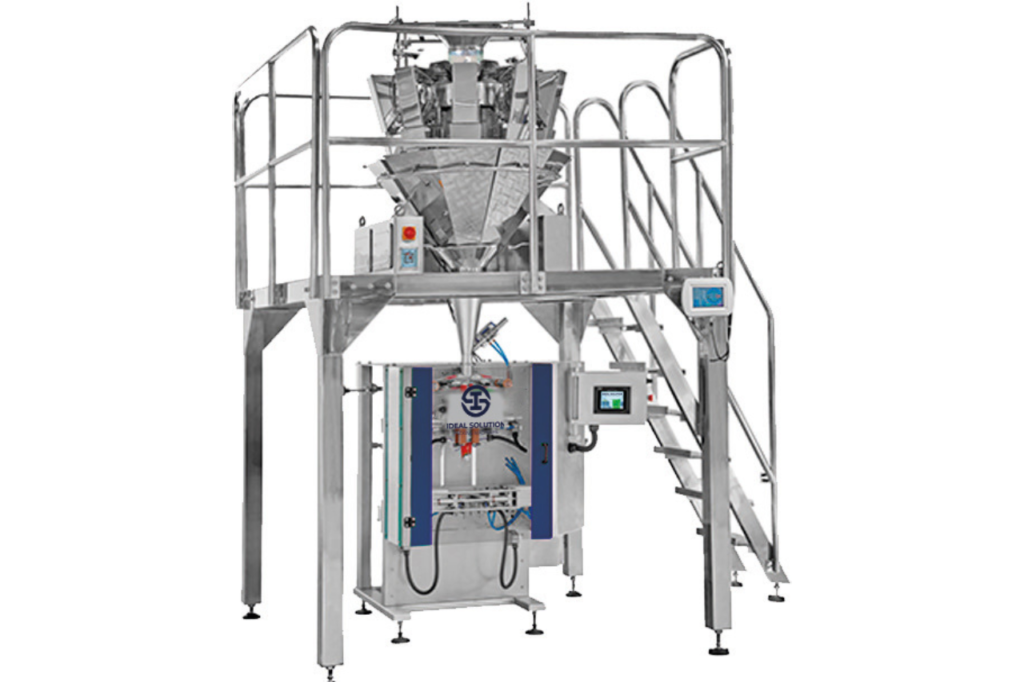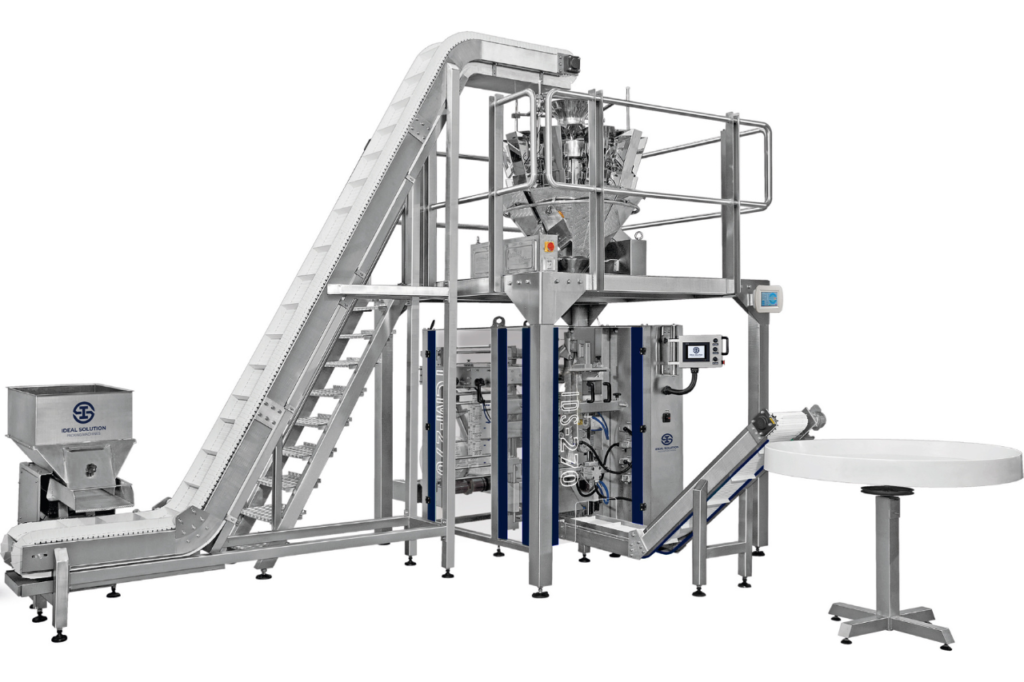Pillow Bag machines
Pillow bag packaging machines are equipment used to produce simple rectangular packages, also known as ‘pillow bags’ or ‘pillow pouches.’ These machines are often used to package bulk products such as bulk foods, dry goods, grains, powders, pharmaceuticals, and more.
Here are the key components and steps involved in the pillow bag packaging process:
Film Unwinding: Rolls of packaging film are inserted into the machine. The film is typically a plastic or laminated film designed to create effective seals and protective barriers.
Pouch Formation: The film is unwound and passes through a series of guides and rollers that shape it into a flat tube.
Product Filling: The product to be packaged is introduced into the formed tube. This can vary from bulk foods to powdered or granular products.
Sealing: After filling, the tube is sealed at regular intervals to create individual pouches. Sealing is usually done using heat or pressure, depending on the film material.
Cutting: The newly sealed pouches are cut from the continuous strip of film, resulting in individual packages.
Collection and Packaging: Finished pillow bags are collected and may be grouped or packed into larger boxes for ease of transportation and distribution.
Code Printing and Inspection: Some pillow bag machines have printing systems to add information such as expiration dates, batch codes, etc. Inspection systems can also be used to ensure the quality of the sealing and integrity of the pouches.
Pillow bag packaging machines are ideal for products that do not require a rigid or specific package shape. They offer an efficient way to package large quantities of products in a compact and easy-to-handle format.
When choosing a pillow bag packaging machine, it’s important to consider the type of product to be packaged, the desired production rate, available space, and budget. The variety of machines available allows companies to select the option that best meets their packaging needs.




